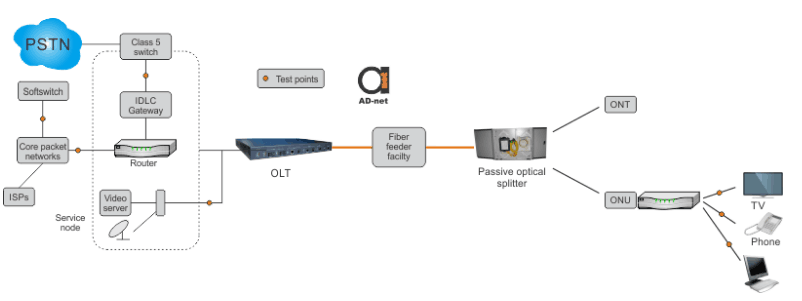PON deployment requires care in layout and configuration. System and subsystems should be properly tested. PONs testing points are shown in Figure 1.

Figure 1. Test points in PON carrying phone, data, and video services.
Transmission, splitter, and splice losses may significantly affect performance of the network. Loss budget is shown in Table 1.
New installations should be tested for total loss in the system. Installation crew must ensure proper activation of OLT and ONT/ONUs. Each coupler and splitter in the network should be measured for loss in the system. Such things as end-to-end loss, back reflection, and link characterization should be evaluated. After installation, system should run multiple tests for optical transmission:
-
throughput
-
latency
-
lost frames (under various optical layer impairment)
-
topological conditions
-
bandwidth sharing
-
QoS support
-
supported services functionality
Additionally protection mechanisms, ONU discovery and ranging, and OAM&S (Operations, Administration, Maintenance, and Provisioning) might be tested.
Table 1.Typical component losses and transmission impairment limits
| Fiber loss | 0.33 dB/km | 1490 nm |
| 0.19 dB/km | 1550 nm | |
| Splitter loss | 16 dB | 1:32 splitter |
| Connector and splice losses | 2-3 dB | |
| WDM coupler loss | 0.7-1.0 dB | |
| OLT to most distant ONU loss | 25 dB | Class B PON |
| 30 dB | Class C PON | |
| Back reflection of coupler ports | > -35 dB | |
| Splice losses | > 0.1 dB |


